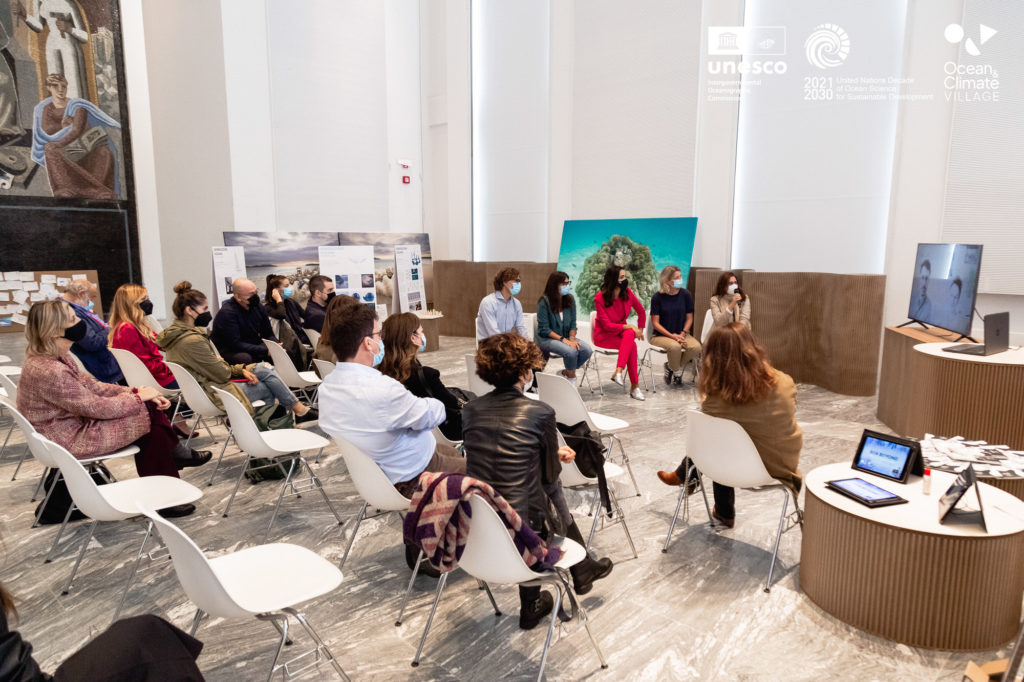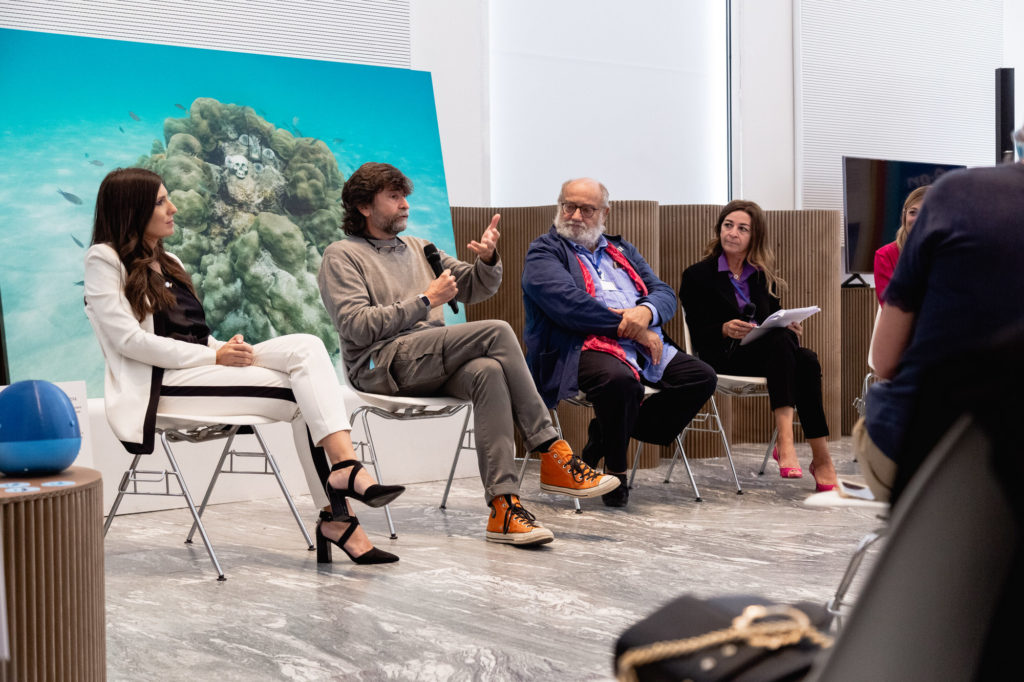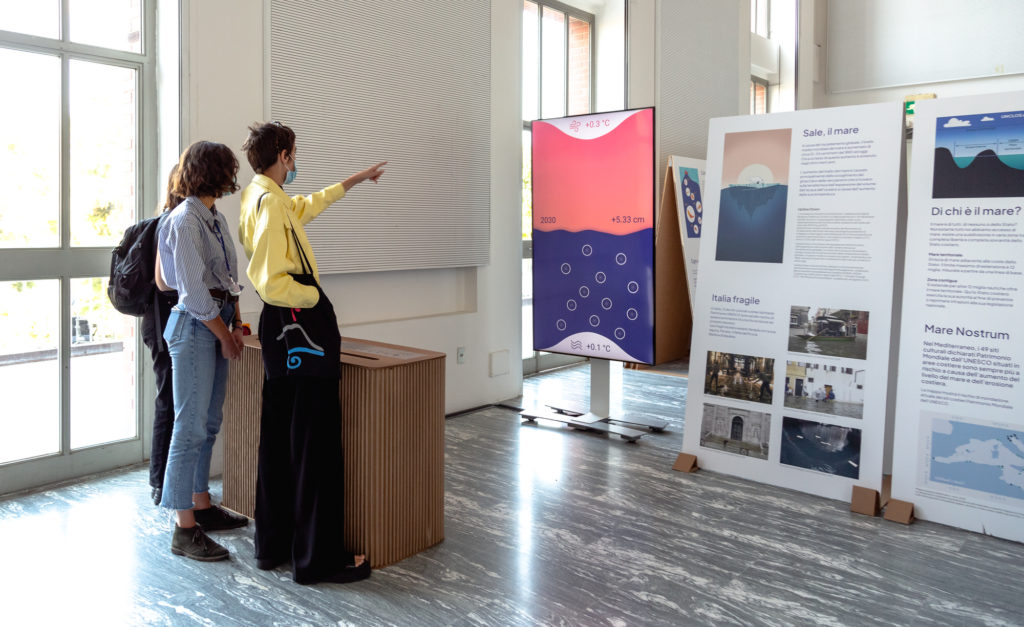Ocean&Climate Village was inaugurated for the first time at the Triennale di Milano from 1 to 3 October 2021, as an activity part of the Youth4Climate initiative of Pre-COP26.
This first edition hosted several conferences and debates on various topics, such as the health of the ocean, urban planning, the role of design and action in creating innovation to bring solutions to the challenges that the ocean is facing today.
The exhibition was composed of a path divided into eight macro-areas that address the main focus from different points of view: climatology, species and habitats, food, culture, environmental protection and the challenges that the ocean is facing today. Various themes were therefore addressed also thanks to the debates scheduled over the three days in which experts from the private, urban, health and design sectors explained the relationship that these fields have with the ocean and the Earth’s climate.
Ocean&Climate Village is a sort of magazine enriched with infographics, interactive panels, illustrations by artists from the Design for the Ocean collective, works by Anne de Carbuccia and photos taken by Enzo Barracco and Giovanni Pellegrini.
Debates and meeting moments



Sound safari
There is no sea in Milan, but in the gardens of the Triennale and in four other locations (Piazza Castello, City Life, Darsena and Bosco verticale) it was possible to listen to its sound thanks to the Sound Safari project by AreaOdeon. Instead of putting the shell close to the ear, it was enough to frame the appropriate QR Codes and discover the composition created by the musician and sound designer Enrico Ascoli with the hydrophonic recordings of cetaceans.
Laboratories
At the center of this awareness-raising work we place young people in particular, with the aim of raising a generation that, by 2030, will have developed not only full awareness of the importance of the ocean and adequate scientific knowledge, but will also be ready to become protagonists of the change we need.

UpSea Down
The interactive installation UpSeaDown combines science, design and communication. According to some studies, an increase in the average global temperature of 1.5 degrees centigrade could cause the average sea level to rise by about one meter as early as 2100. A catastrophe for cities like Miami, Venice and Bangkok, or for entire states like the Maldives or Kiribati. However, it is a threat that we cannot see with the naked eye and therefore can struggle to internalize. The digital and interactive installation UpSea Down translates it into a sound, tactile and visual experience, with a journey through time (from 1940 to 2100) developed by digital designer Federico Girotto in collaboration with art developer Davide Santini and oceanographer Valentina Lovat.
